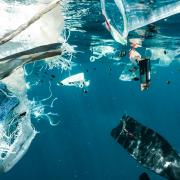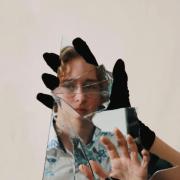
Scrolling through Netflix, it appears that every pandemic-related film has hit my recommendations. After watching the highly-acclaimed 'Contagion', which was released a decade ago, I wonder why it is so strikingly similar to the pandemic currently gripping the world.
The parallels in both the film, which was out in 2011 and the coronavirus pandemic seem almost shocking: both outbreaks killed millions of victims who suffered from flu symptoms and social distancing and disinformation come up in the film as they do now in this coronavirus era.
Director Steven Soderbergh’s eerily accurate foretelling of the COVID-19 crisis, starring Matt Damon, Kate Winslet, Jude Law, Marion Cotillard, Gwyneth Paltrow, and Laurence Fishburne, has once again reached fame as a result of its uncanny prescience. Therefore, the 9-year-old drama is climbing up the charts, trending on Amazon Prime Video as well as iTunes Top 10, and every on-demand streaming service seems to have the movie for viewing.
When contrasting the fictional virus with Covid-19, the similarities seemed to grow. For example, the origins of both viruses were strikingly close - the final scene in "Contagion" reveals that the fictional "MEV-1" virus originated from a pig, that ate a piece of banana dropped by an infected bat, escaping the destruction of its palm tree forest habitat in China. Likewise, Covis-19 seems to have been a result of infected animals too. It makes me question whether as humans, is it inevitably our actions that have caused this? In the film, deforestation was the stimulus, and for our pandemic, humans selling the live animals in Wuhan kickstarted this issue. Not to mention, our rapid traveling spread the virus across the globe. So, no matter how far we may excel in science and computational work, our disturbance in Mother Nature's home always brings drastic effects. Effects that have shifted our lives and reminded us of how 'mighty' homo sapiens truly are. In this sense, the coronavirus pandemic could perhaps be seen as Nature's emergency back-up plan to reduce global warming and climate change. For now, with factories closed and people staying at home, evidence shows pollution levels have rapidly dropped and the ozone layer stands a small yet hopeful chance at redemption.
Returning back to the parallels between both fiction and reality, the transmissions, symptoms, and increasing mortality rate seem to match drastically. Like Covid-19, the film's MEV-1 is a respiratory disease, carried in expelled droplets of saliva from a sneeze or cough. It spreads directly between people when those droplets reach the eyes, nose, or mouth of an uninfected person. The film's virus is also transmitted by fomites or surfaces that have been contaminated with infections after sick humans touch them. The spreading of MEV-1 is exacerbated by the average person touching their face a few thousand times per day -- while in between, they're touching door handles, elevator buttons, train poles, and each other. Evidence shows that the novel coronavirus transmits through the same mechanisms, according to the World Health Organization. Therefore, we urge everyone to "control the contagion" by washing your hands, practicing social distancing, and following the advice of health experts.
While the mass number of infected and deaths grows, our wishes turn to hope for immunity. In the film, the fictional Mitch Emhoff (played by Matt Damon), husband of index case Beth, is found to be immune to the virus. He dodges the deliberately targeted coughs of strangers in grocery stores and survives through the film physically unscathed. Today, however, there are no reports of people biologically immune to getting the novel coronavirus. But can one be immune to the novel coronavirus after recovering from it? Scientists aren't sure yet. And if someone could be immune, we don't yet know how long it could last for.
The R0 - The number of people a sick person is likely to infect is called the R0, or R-naught, of a virus. The R0 of the fictional MEV-1 virus was 4, while the R0 of coronavirus is 2.2, according to a recent study of data from the first cases of Covid-19 in Wuhan and investigations conducted by health officials. They found the epidemic doubled about every seven days. In other words, on average, each Covid-19 patient transmits the infection to an additional 2.2 people.
In "Contagion," CDC research scientist Dr. Ally Hextall (Jennifer Ehle) stresses that it can take months, maybe a year, to be able to distribute a vaccine after testing, clinical trials, manufacturing, and distribution. However, Hextall speeds up the process by inoculating herself with the final experimental vaccine, then is able to provide doses for human use in just several months. In reality, leading infectious disease experts say the typical vaccine takes between 8 and 10 years to develop but with health organizations attempting to escalate the speed - currently, a year to 18 months is an optimistic time window for a possible coronavirus vaccine.
Near the end of Contagion, the CDC head Dr. Ellis Cheever (Laurence Fishburne) gives the son of a CDC custodian his own intranasal vaccine near the end of the film. The boy hesitantly shakes Cheever's hand, expressing his gratitude. "You know where this comes from, shaking hands?" Cheever asked. "It was a way of showing a stranger that you weren't carrying a weapon in the old days. You offered your empty right hand to show that you meant no harm." If there are any concrete takeaways "Contagion" offers us, it's a reminder to stop touching your face, and a chance of hope that this too shall pass.
We can only hope we will one day be able to reach out and touch again, thankful that our pandemic is over.



























